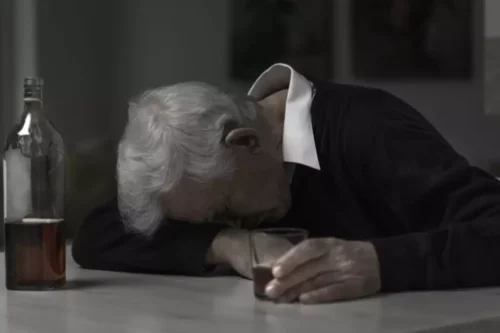
Into Action Sober Living operates a sober home at 296 Orange St. for 11 women in recovery from substance abuse. Into Action has maintained that its sober-living homes fall within the city definition of a family and require no https://ecosoberhouse.com/ more permits or regulatory action than that of a family dwelling. Eddy Krumpotich, a harm reduction advocate and founder of the Minnesota Harm Reduction Collaborative, worked with Abderholden on pressing for the legislation.
- While Level 2 homes don’t have recovery services onsite, there’s usually a strict requirement for maintaining membership in a recovery group or sticking to an aftercare plan with a counselor.
- By providing separate homes, facilitators can provide gender-specific care to improve the chances of success.
- If you wish to contact a specific rehab facility then find a specific rehab facility using our treatment locator page or visit SAMHSA.gov.
- Several factors determine length of stay, such as the severity of the addiction, a person’s history of substance abuse, their recovery progress, ability to follow rules and ability to pay rent.
- Other benefits include being around others who are at the same point in the recovery process, as well as one or two staff members who reside with the residents and are professionally trained.
Sober Living Houses and 12-Step Programs

Unlike many halfway houses, sober homes are not monitored by state agencies. The best facilities employ compassionate staff and enforce strict rules that support the recovery process. All of a sober house’s residents are expected to pursue better health and a substance-free life. Sober living homes vary depending on how they’re run and the services they provide. Some sober living homes may also cater to specific groups, such as women, men, young people, older adults or LGBTQIA individuals.
The Importance of Sober Living in Recovery
The ideal time to end your time at a sober living house is after you have established a strong foundation for moving forward sober, with a good quality of life and strong community support. Job placement programs and educational opportunities are sober house also available to help residents reintegrate into society as productive, sober individuals. This holistic approach to recovery ensures that you’re not just sober, but also prepared to tackle the challenges of everyday life after addiction.

How Sober Living Houses Work
These days, Smedstad is an unapologetic advocate for the power of sober housing. Outside of his operations-director duties, he’s also a live-in house manager at Hazelwood House, an expansive and clean two-story house with a tidy lawn on a quiet cul-de-sac in St. Paul’s east side. In rare examples, some of Curtiss’ homes have allowed opioid antagonists, but other potentially addictive substances, even those prescribed for co-occurring disorders like anxiety and ADHD, are generally not allowed. A house for veterans who struggle with substance abuse and PTSD, Bravo Zulu House will open during the first quarter of 2025. Join our supportive sober community where each day becomes a step towards personal growth and lasting positive change. For many people recovering from alcohol use disorder, this means implementing lifestyle changes such as new social circles, new settings, and new behaviors.

Sober living homes are known for strictly enforcing rules, and violations usually result in eviction. Today, most sober homes are unregulated, but some homes are part of larger organizations such as Oxford House, the Florida Association of Recovery Residences or the New Jersey Alliance of Recovery Residences. “At a minimum, this property needs 10 occupants to be financially viable, and 11 occupants makes more sense because landlords need to be financially encouraged to provide sober housing, or it will not exist.” The cost of repeat treatment, prison time, ER visits is far greater than the cost of a recovery home. Recovery homes have proven to have a success rate of 80%—that is a great success rate for recovery from a substance use disorder.

Today halfway houses are still used as a way to foster re-entry into society for addicts and sometimes for prison inmates. However, there are mixed-gender homes and homes that specifically cater to LGBTQ+ people. Prices vary, but most of the time it costs about the same as it would cost to live in a modest apartment or home. Residents must pay rent on time, but they do not have to pay first and last month’s rent. A study published in the Journal of Substance Abuse Treatment found sober living home residents experienced improvements in arrest rates, alcohol and drug use rates, and employment rates. The authors found evidence that 12-step program attendance and social support systems were key components of recovery for residents.
- People who are suffering from some type of substance abuse issue often have a hard time readjusting to society, especially if they have received inpatient treatment or gone to rehab.
- These homes can offer an in-between option for individuals after they complete a treatment program and before they return to their homes and lives.
- This model influenced different versions of residential inpatient facilities that can be found today.
- Regular drug testing and the community’s encouragement provide extra layers of accountability, further protecting your sobriety.
- The risk of relapse is particularly high in the first few months following treatment.
- This continuation of support, motivation, and, in some cases, therapy will significantly enhance their chance of long-term sobriety.
- The same research also identified operational characteristics that improved the success rate of sober houses.
- In general, individuals with a history of vagrancy, incarceration or inadequate social support are at high risk of relapse.
- Sober living homes are transitional living spaces for individuals recovering from drug and alcohol addiction.
- In the journey towards sobriety, the ambiance and the support system around you play pivotal roles.